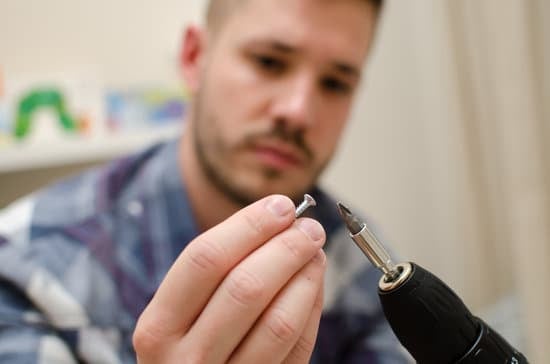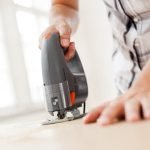Are you constantly wondering “how to improve my cell phone reception at home“? Many people experience poor cell phone reception in their homes, which can be frustrating and inconvenient. In this article, we will explore the reasons why you may have poor cell phone reception at home, as well as provide tips and solutions for improving your signal strength.
There are various factors that can contribute to poor cell phone reception at home, including the construction of your house, the distance from the nearest cell tower, and even the weather. Understanding these factors is crucial in finding an effective solution to boost your signal and improve your cell phone reception.
In addition to understanding the factors that affect cell phone reception, choosing the right cell phone carrier can also make a significant difference in improving your signal strength. We will provide tips for selecting a carrier that offers better coverage in your area and discuss other DIY solutions for improving cell phone reception at home. Keep reading to learn more about how you can enhance your connection and enjoy better call quality at home.
Understanding the Factors That Affect Cell Phone Reception
Poor cell phone reception at home can be frustrating, but it’s important to understand the factors that affect your signal before implementing any changes. Here are some key reasons why you may have poor cell phone reception at home:
1. Distance from the nearest cell tower: If you live in a rural area or far from the nearest cell tower, you may experience weak signal strength.
2. Building materials: The construction materials used in your home can also affect cell phone reception. Materials like metal, concrete, and even energy-efficient windows can block or weaken your signal.
3. Interference: Electronic devices, appliances, and even weather conditions can cause interference and disrupt your cell phone signal.
To improve your cell phone reception at home, it’s important to consider these factors and take appropriate measures. Here are some tips for choosing the right cell phone carrier for better reception:
– Research different carriers in your area and compare their coverage maps to determine which one offers the best service in your location.
– Consider asking neighbors or friends who use different carriers about their experience with signal strength at their homes.
Understanding these factors will help you make an informed decision when choosing a cell phone carrier with better coverage in your area. Additionally, considering these crucial components will help you make well-informed decisions on how to improve my cell phone reception at home.
Tips for Choosing the Right Cell Phone Carrier for Better Reception
When it comes to improving your cell phone reception at home, one of the most important factors to consider is the quality of your cell phone carrier. The right carrier can make all the difference in ensuring that you have strong and reliable signal strength no matter where you are in your home. Here are some tips for choosing the right cell phone carrier for better reception.
First and foremost, it’s essential to research and compare different carriers in your area. Not all carriers provide equal coverage, so it’s crucial to find out which ones offer the best reception in your specific location. You can use online coverage maps and ask friends or neighbors about their experiences with different carriers to gather this information.
Another important consideration when choosing a cell phone carrier for better reception is to take into account the frequency bands they use. Different carriers operate on different frequency bands, and some may work better than others depending on various factors such as building materials and geographical features. Understanding which frequency bands work best in your area can help you make an informed decision when selecting a carrier.
Lastly, it’s also worth considering the overall network quality and customer service reputation of each carrier. Look for reviews and testimonials from other customers to get an idea of how reliable their service is, especially when it comes to signal strength and resolving any issues that may arise. By taking these factors into account, you can make an informed decision about which cell phone carrier is best suited to improving your cell phone reception at home.
By thoroughly researching and comparing different carriers, understanding frequency bands, and considering network quality and customer service reputation, you will be well-equipped to choose the right cell phone carrier for better reception at home.
How to Improve Cell Phone Reception Indoors
If you have poor cell phone reception at home, there are a few reasons that could be causing this issue. It could be due to the distance from the nearest cell tower, the construction materials used in your home, or even the weather conditions. Understanding these factors will help you identify the best solutions to improve your cell phone reception.
When it comes to improving cell phone reception indoors, there are several tips and tricks you can try. Here are some suggestions to help boost your signal:
- Install a microcell or femtocell device provided by your carrier
- Position your router and cell phone closer together
- Use Wi-Fi calling feature on your smartphone
In addition to these DIY solutions, you may also want to consider purchasing and installing a cell phone signal booster. These devices work by amplifying the existing signal in your home, providing you with better reception throughout the entire space.
Remember that seeking professional help is also an option if you have exhausted all other possibilities for improving your cell phone reception at home. A professional can conduct a site survey and provide recommendations for the best solutions tailored to your specific needs.
By understanding the factors affecting your cell phone reception and implementing some of these tips, you can significantly improve your cell phone reception at home.
DIY Solutions for Improving Cell Phone Reception at Home
If you are experiencing poor cell phone reception at home, there are several do-it-yourself (DIY) solutions that you can try to improve your signal. These simple and cost-effective methods can often make a significant difference in the quality of your cell phone reception without having to rely on professional help.
Positioning Your Phone
One of the most basic DIY solutions for improving cell phone reception at home is simply repositioning your phone. The location of your phone within your home can have a major impact on the strength of the signal. Try moving to different areas of your house to see if you can find a spot with better reception.
Using Wi-Fi Calling
Many smartphones today have the capability for Wi-Fi calling, which allows you to make and receive calls over a Wi-Fi connection instead of relying solely on cellular networks. By utilizing this feature, you can improve your call quality and reduce dropped calls, especially in areas where cellular coverage is weak.
Creating a Homemade Signal Booster
Another DIY solution for improving cell phone reception at home is creating a homemade signal booster using household items such as aluminum foil or a baking pan. While these homemade boosters may not provide a drastic improvement in signal strength, they can sometimes help amplify the existing weak signal in certain areas of your home.
By trying out these DIY solutions, you may be able to achieve better cell phone reception at home without having to spend a lot of money on professional assistance. However, if these methods do not significantly improve your situation, it may be time to consider investing in more advanced solutions or seeking professional help from a technician specializing in improving cell phone reception.
Purchasing and Installing Cell Phone Signal Boosters
Understanding Cell Phone Signal Boosters
Cell phone signal boosters are devices designed to amplify weak outside cell signals in order to provide better coverage inside a building. These boosters work by capturing the existing outside signal, amplifying it, and then rebroadcasting the enhanced signal within a certain area. They can be an effective solution for those struggling with poor cell phone reception at home.
Choosing the Right Cell Phone Signal Booster
When choosing a cell phone signal booster, it’s important to consider the size of your home or office space, as well as the strength of the outside cell signal. There are different types of boosters available, including those for single rooms or small areas, as well as ones designed for larger buildings. It’s also essential to ensure that you purchase a booster that is compatible with your specific cell phone carrier.
Installing a Cell Phone Signal Booster
Once you have purchased a cell phone signal booster, proper installation is crucial for optimal performance. Typically, installation involves placing an outdoor antenna in an area with strong outside cell signals, such as on the roof of your home or in an elevated position. The boosted signal is then distributed indoors through an internal antenna. It’s important to carefully follow the manufacturer’s instructions during installation to ensure that the booster operates effectively.
By purchasing and installing a cell phone signal booster, individuals can significantly improve their cell phone reception at home. These devices can provide a much-needed solution for those experiencing dropped calls and slow data speeds due to poor reception within their living spaces. If you find yourself constantly asking “how to improve my cell phone reception at home,” investing in a quality signal booster may be the answer you’ve been looking for.
Utilizing Wi-Fi Calling and Other Digital Solutions
Does your cell phone reception at home leave much to be desired? Have you tried different carriers and still experience poor reception indoors? If so, it may be time to explore digital solutions such as Wi-Fi calling to improve your cell phone reception at home.
Wi-Fi calling allows you to make and receive calls over a Wi-Fi network instead of using your cellular network. This is particularly helpful if you have poor cell phone reception at home but a strong Wi-Fi connection. Most modern smartphones are equipped with this feature, which can easily be activated in the settings menu. By utilizing Wi-Fi calling, you can experience clearer calls and better connectivity even in areas where your cellular signal is weak.
In addition to Wi-Fi calling, there are other digital solutions that can help improve your cell phone reception at home. One option is using apps that enable voice over internet protocol (VoIP) calling, which allows you to make calls over the internet rather than through your cellular network.
These apps can provide an alternative method for making calls when your regular cell phone reception is unreliable. Another digital solution is using messaging apps with call features, which also use an internet connection for making voice calls.
By exploring these digital solutions, you may find an effective way to improve your cell phone reception at home without having to switch carriers or invest in hardware solutions like signal boosters. Utilizing Wi-Fi calling and other digital options can provide a convenient and cost-effective means of improving your indoor cell phone reception.
Seeking Professional Help for Improving Cell Phone Reception at Home
After exhausting all the DIY solutions and attempting to improve your cell phone reception at home, you may find that seeking professional help is the next step. There are situations when the simple fixes and adjustments suggested by carriers or found online just don’t work. This could be due to unique geographical challenges, building materials, or other factors that require a more specialized approach.
Professional help can come in the form of hiring a signal booster installer who can survey your property and strategize the best placement for your booster. They have specialized knowledge and tools to accurately determine where you need signal enhancement the most, ensuring that you get maximum improvement in your cell phone reception.
Another option is to consult with a telecommunications professional who can conduct a site survey to assess the factors contributing to poor reception on your property. They can then provide recommendations on how to address these issues, whether it be through equipment upgrades, network enhancements, or other solutions tailored to your specific needs.
In conclusion, improving cell phone reception at home may require the expertise of professionals who can analyze and address the unique challenges affecting your signal. By turning to experienced professionals for assistance, you can ensure that you receive reliable and consistent cell phone reception throughout your home. Don’t hesitate to seek help if you continue to experience poor signal despite trying DIY methods – there are experts ready to assist you in achieving better cell phone reception at home.
Frequently Asked Questions
How Can I Make My Cell Signal Stronger at Home?
You can improve your cell signal at home by first identifying the areas where the signal is strongest. Then, try repositioning your router to a central location and consider using a signal booster or Wi-Fi calling to enhance connectivity.
Why Is My Mobile Phone Signal So Bad in My House?
The poor mobile phone signal in your house could be due to various factors such as the construction material of your home, distance from the nearest cell tower, or interference from other electronic devices. These factors can weaken the signal and affect reception indoors.
Is There a Signal Booster for Cell Phones?
Yes, there are signal boosters available for cell phones that can help improve your signal strength at home. These devices work by capturing an existing cellular signal outside of your home, amplifying it, and then rebroadcasting it inside, providing stronger coverage for calls, texts, and data.

I’m thrilled to have you here as a part of the Remodeling Top community. This is where my journey as an architect and remodeling enthusiast intersects with your passion for transforming houses into dream homes.





